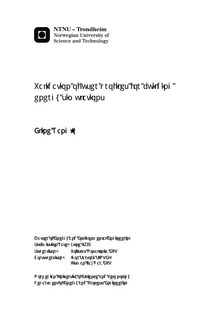Validation of user profiles for building energy simulations
Master thesis
Permanent lenke
http://hdl.handle.net/11250/257567Utgivelsesdato
2013Metadata
Vis full innførselSamlinger
- Institutt for elkraftteknikk [2465]
Sammendrag
To make Zero Energy Buildings (ZEB) commercially competitive as dwellings the energy supply and on-site generation has to be thoroughly planned. The optimal mix of energy sources depend on the demand profiles for the building. Detailed load calculation for HVAC installation is implemented in many building energy simulation software whereas the main user dependent loads are greatly simplified.In this assignment models for generating stochastic and statistical representative user profiles for Norwegian households have been made. The work is a continuation of the literature study where a methodology of Richardson et al. was recommended for further work. This model uses national time of use survey data (TUD) which have some discrepancies compared to Norwegian TUD.The objective has been to adjust Richardson's model with Norwegian data and assess the validity of the generated user profiles. Thereby determine if the Norwegian TUD can be used despite the discrepancies with the existing simulation methodology.Four models have been made generating data for occupancy and electricity demand for lighting, non-HVAC appliances and water heater (DESWH). The generated profiles have 10-minute resolution for the occupancy model and 1-minute for the other three.With limited access to measured data only superficial validations of the output could be made. From the comparison it is found that the generated demand profiles for lighting and appliances can be used in building simulation software if calibrated separately for each household size. The occupancy is considerably underestimated in the model and the profile for DESWH should be based on more detailed TUD. No model have been made for domestic hot water draw-off events because too little data was available for both adjusting the model input and validating the output. Without more data the existing model of Widén or Jordan and Vajen is recommended to use as is.
